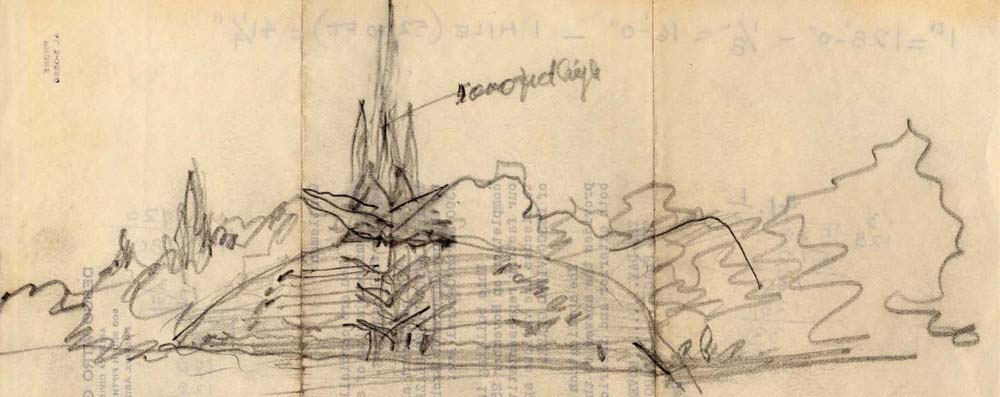Colorado Springs Free Press
By Harold Wynne
July 2, 1954 Eighty-five-year-old Frank Lloyd Wright, the architect, scrutinized the site of the United States Air Academy in an on-the-spot visit late Thursday afternoon, termed it “wonderful” and made it clear that he considers the site a challenge to “express America” by designing the new school’s buildings.
He heads a group of eight architects which have banded together as Kittyhawk Associates to bid for the job of designing the Air Academy.
As he stepped from an automobile which brought him from Denver to Husted north of Colorado Springs Thursday, Architect Wright scanned the skyline to the west and said:
“Charlie Lindbergh picked a wonderful site.”
He and his party were met by a group of Colorado Springs businessmen and newsmen, who accompanied him on a brief tour of the Cathedral Rock Ranch area.
Wright stressed that he believes "it is time" that America realize that it has "something to export besides dollars" and that it has a modern concept of architecture which has come into its own.
"The architecture of the new academy must represent the best America can produce," he said.
He said that the one weakness of America is that "it isn't enough America."
"We've forgotten what we are, where we are and who we are," said he, adding that he thought it was time American stopped "huddling" and be itself.
He said that modern architecture had its origin in America which "has a culture of its own."
As for the 15,100-acre site for the new academy, Wright said that every location "demands its own solution" in architecture and that there are no buildings in America today suitable for the academy...







